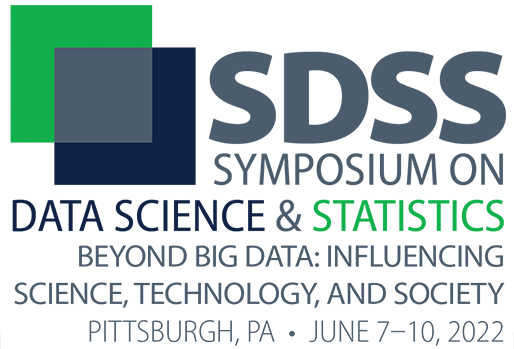Poster Presentation Tips
Lightning Session Electronic Posters
Electronic poster (e-poster) presentations are similar to traditional poster presentations, but presented on a large computer screen. The ASA uses 42” LCD displays in the landscape position. Each poster is part of a session, and the speaker is expected to be in place for both the oral and poster presentations on the date and time assigned.
Whether traditional or electronic, a well-constructed poster is self-explanatory, achieving both coverage and clarity. Your e-poster can consist of multiple slides or just one. Use the tips below as guidelines for formatting and making the most of your presentation. Save your poster as a PDF to a USB key (thumb) drive and bring it with you the day of your presentation.
Formatting Tips
- Less is more. Be clear and concise with poster design and content. Overcrowding a poster makes it difficult to read.
- Use fonts that are large enough to read at a distance.
- Include the title and name(s) of the presenter(s) in a larger, bolder font than the rest of the poster.
- Provide clear labels or headings for each section of your presentation.
- Remember contrast. Put light-colored fonts on dark backgrounds and dark fonts on light-colored backgrounds so your viewers can see your text clearly.
- Imbed high-quality graphics and videos.
- Avoid hyperlinks. Internet access will not be available during your presentation.
- Sound is not permitted due to the open area in which posters are presented.
- Set the page size to 36.5” wide and 20.5” high.
- Use a minimum font size of 32 points.
-
Don’t overcrowd the slide.
Single-slide presentation template, blank
Single-slide presentation template with sample layout
Single-slide presentation template with sample layout, including formatting tip text - Set the page setup or slide size to “on-screen show (16:9)” or 36.5” wide x 20.5” high.
- Use bullet points.
- Use a minimum font size of 14 points if page setup is “on-screen show (16:9).” If slide size is set to 36.5” wide x 20.5” high, use a minimum font size of 32 points.
- Use the slideshow mode to automatically change the display during the day, and then switch to the manual mode to move through the slides for your presentation.
- Avoid using too many slides. Past presenters have found that 10 slides are a good amount, neither too few nor too many.
- Put a footer on each slide such as “Slide 1 of 6” to let the viewer who walks by midcycle know where they are in the presentation and how long they’ll wait until it begins again.
Multiple-slide presentation template, blank
Multiple-slide presentation template with sample layout
Multiple-slide presentation template with sample layout, including formatting tip text
For single-slide e-posters:
For multiple-slide e-posters:
Content Tips
Coverage: In addition to title/author and abstract, most successful posters provide brief statements of introduction, method, subject, procedure, results, and conclusions. Ask yourself the following:
- Have I provided all the obvious information?
- Will a casual observer walk away understanding my major findings after a quick perusal of my material?
- Will a more careful reader learn enough to ask informed questions?
- What would I need to know if I were viewing this material for the first time?
Clarity: People attending a poster session are free to move about from poster to poster and often must view a poster from a distance, making it difficult to read excessive text and small fonts. With this in mind, we recommend you do the following:
- Use large fonts and limit text to essential information. Place your major points in the poster and keep the nonessential, but interesting, sidelights for informal discussion.
- Keep content simple and communicate clearly.
- Consider whether the sequence of information is evident. Indicate the order of your material with numbers, letters, or arrows when necessary.
- Use captioned illustrations, photographs, graphs, video (without sound), or other types of visually appealing material. “A picture is worth a thousand words.”
- Make your conclusions or summary a concise statement of your most important findings.
Online Resources for Poster Creation and Templates
These sites may provide other useful templates and tips for preparing your e-poster. Be sure to adjust any template using the formatting tips provided above for best display on the ASA’s monitors.
- http://gradschool.unc.edu/student/postertips.html
- https://www.postersession.com/poster-templates.php
- http://gradschool.unc.edu/student/postertips.html#powerpoint
- http://viget.com/flourish/14-tips-for-better-presentation-slides
Creating Slides Through Beamer and LaTeX
The ASA welcomes e-posters created using LaTeX and \documentclass{beamer}. Please keep in mind that the screens on which your posters and presentations will be displayed are approximately 36.5” wide by 20.5” high.
If you are using the vanilla Beamer package, you might consider using the 20pt style:
\documentclass[20pt]{beamer}
If you are familiar with other Beamer packages, you might consider using Beamer poster:
\documentclass{beamer}
\usepackage{beamerposter}
You can customize this further. For example, the width and height are in cm here:
\usepackage[orientation=landscape,size=custom,width=90,height=51, debug]{beamerposter}
We strongly recommend you test your presentation on a screen of approximately the same size as will be present at the meeting. There are many templates and examples of customized Beamer commands, templates, and tutorials on the internet if you need further assistance.
